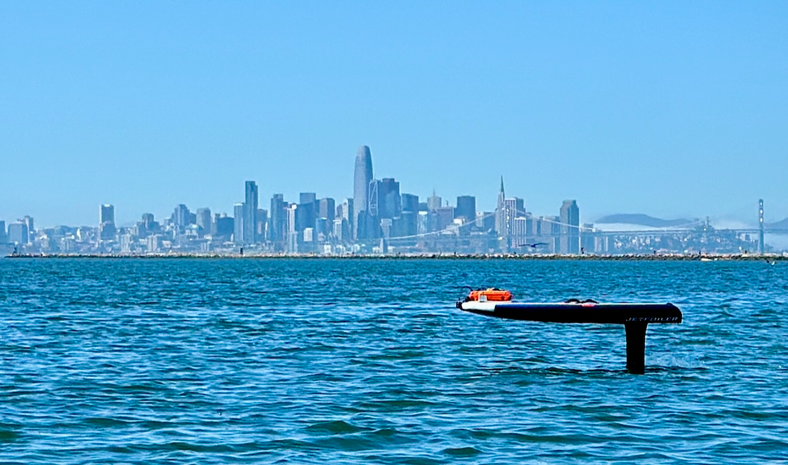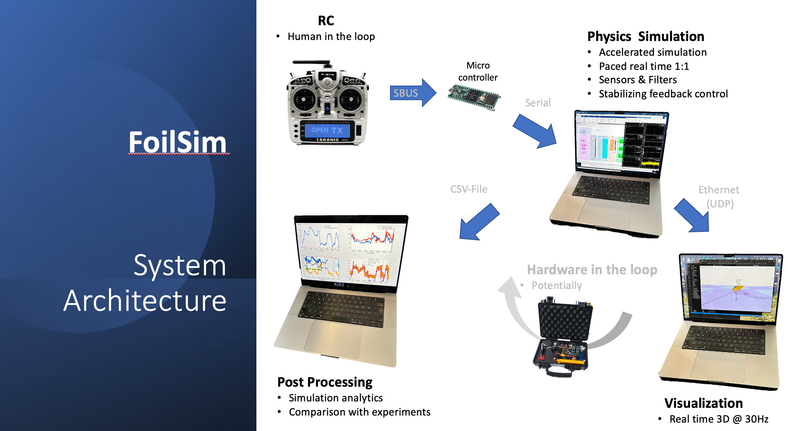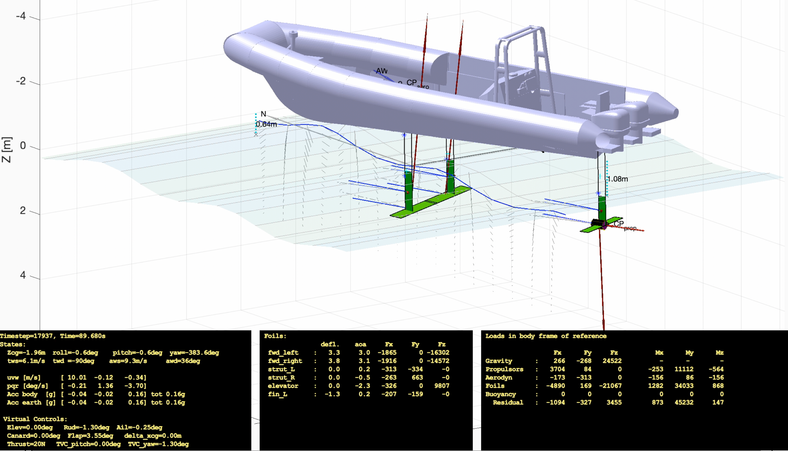Jakob Kuttenkeuler
Professor
Details
Researcher
About me
I am a full professor at KTH Centre of Naval architecture, group of Maritime Robotics. I teach various courses in the master programs in Naval architecture and Maritime engineering. My involvement in research projects concerns topics ranging from route optimzation of ships using ensamble forecasts, aeroelastic models for analysis of sailboat rigs, active measures for parametric roll mitigation of PCTC vessels, development of methods and technologies for cost effective small Autonomous Underwater Vehicles, AUVs.
Evolo:
Latest clip. In 2008, Kuttenkeuler, S. Hallström and a team of students were first in the world to combine a foiling personal surfboard with electic propulsion, thereby starting the sport nowadays referred to as E-foiling. The project can be seen here. A lot has happened since then and Kuttenkeuler still engages in the world of E-foiling but now mostly in the unmanned configuration as seen on the picture and in this clip.

The wPCC project Oceanbird:
I am very proud to be one of the researchers in the wPCC project Oceanbird aiming to contribute to the disruptive change in sea transportation towards sustainability. The project aim at developing technologies needed to sail large cargo vessels over open oceans and is a collaboration between KTH, Wallenius Marine and SSPA. The KTH part of the project focuses on aerodynamics, performance predictions, weather routing, maneuver simulations and control and model scale tests. The picture below is a 7 meter (1:30 scale) sailing demonstrator.

The Autonomous Underwater Vehicle LoLo:
The general aim for the Maribot LoLo (4 meters long and 400kg heavy) is to be a demonstrator tool and experimental platform for a wide range of research activities. The AUV itself is thus to be regarded as the tool with which capabilities in all four SMaRC technology areas (Autonomy, Perception, Endurance and Communication) can be tested, improved and demonstrated. Since the "truck" is optimized for flexibility rather than for a certain mission-specific operation. Some of the key features are:
- Large enough to carry a wide variety of payload (incl. e.g. water sampling and buoy-deployment,
alternative energy systems etc.).
- Small enough to be trailered by car, handled and operated (incl. ramp-LAR) by 2 persons.
- Robust enough to be handled by students with "standard tools".
- Simple integration of science-sensors (Physical space, power & data).
- Short turnaround times in terms of both back-to back missions and when tailored for certain mission.
- Scalable in terms of e.g. energy storage & payload bay.
- Adaptable, (propeller, glider, speed, light/neutral/heavy, static trim-able).
- Standardized and easy inclusion of new sensors into the "Scientist".
- Maneuverable enough to sniff while "slow enough" to have great range.

Flight Dynamics Simulation of Hydrofoiling Watercraft
Foilsim is the name of a numerical time-domain flight dynamics simulator for hydrofoiling craft under development by Jakob Kuttenkeuler. The fundamental idea behind the Matlab/Simulink-basedFoilsim was the prospect of realistic studies of equilibrium states as well as characteristics of stability and the full dynamic behavior of any hydrofoiling craft including control systems, sensors and actuators. The simulator is full 6DOF/3D including Coriolis & inertia terms (full inertia tensor) in the equations of motion. The foil-modeling is somewhat application-dependent and enables 2D strip-approach including 3D corrections. The use of virtual controls (such as elevators, ailerons, elevator, flaps and thrust vectored (TVC) propulsion) mapped onto the physically actuated (application-dependent) foil set gives large flexibility of control law development. The modeling of the environment includes 2D wave spectrum and effects of aerodynamics of the craft, i.e. the craft can be maneuvered at all relative wind and wave angles.
Foilsim is intended to be used as a digital twin for any hydrofoiling craft for the purpose of:
- Simulation based configuration design.
- Control system design, verification & optimization.
- General investigations using hydrofoil simulation.
- Maneuver design/analysis (e.g. banked & unbanked turns).
- Weight-shift analysis for performance and stability investigations.
- Ride quality evaluations (seakeeping with and/or without waves/wind)
- Loads prediction.
- Failure analysis (e.g., by simulating component failure).
- Wind sensitivity.
And here is a clip showing the result of a project where a student group coupled a motion rig to the physics simulator with force feedback and all :-)


Courses
Advanced Topics in Naval Architecture (FSD3702), examiner | Course web
Degree Project in Aeronautics, Second Cycle (SD281X), examiner | Course web
Degree Project in Naval Architecture, Second Cycle (SD271X), examiner, course responsible | Course web
Lightweight Design (SD2432), examiner | Course web
Minor Marine Technology Project (SD2724), examiner, course responsible, teacher | Course web
Naval Design (SD2702), examiner, course responsible, teacher | Course web
Sailing for Performance (SD2706), examiner, course responsible, teacher | Course web
Small Craft Design (SD2711), examiner, course responsible, teacher | Course web